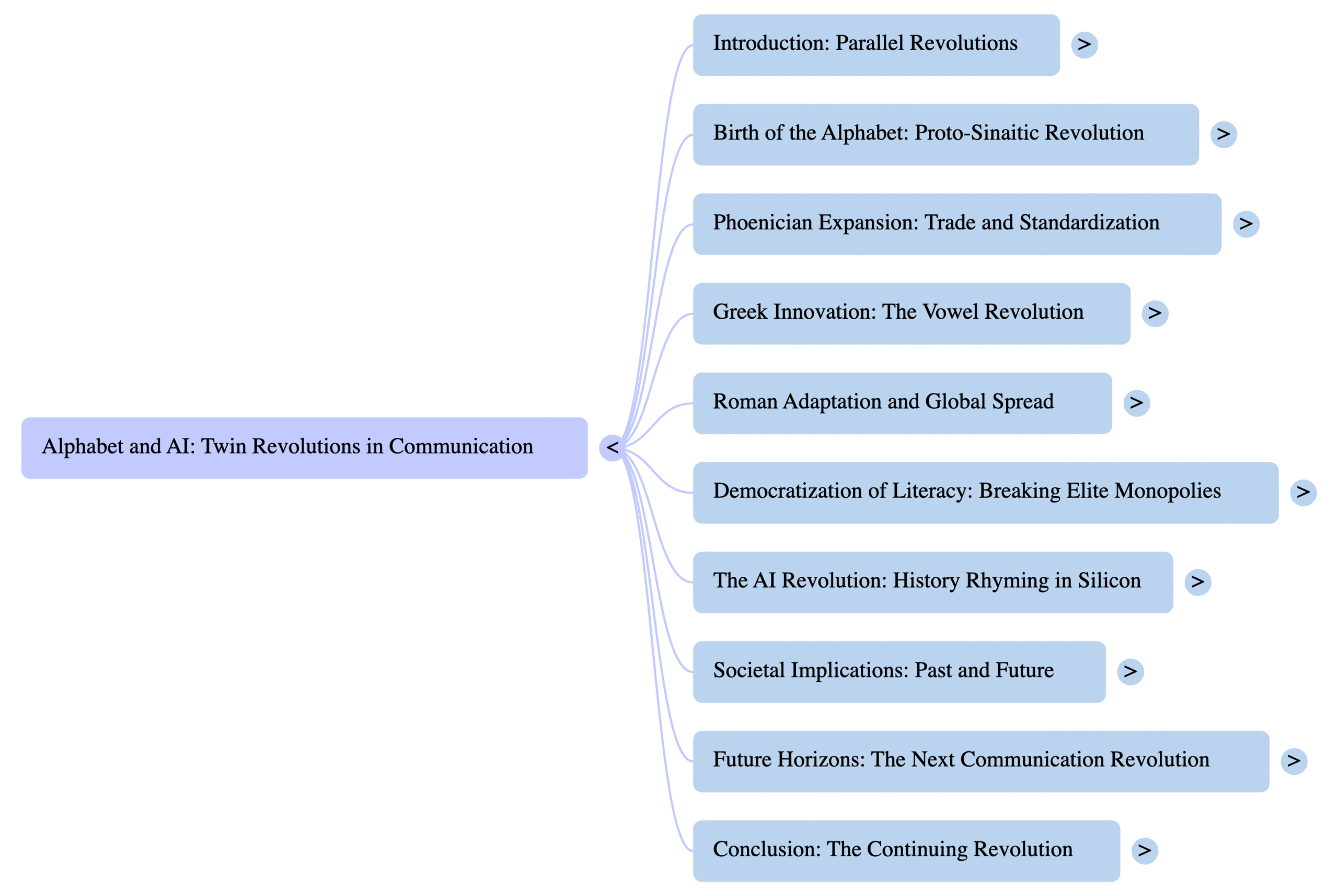The document, titled “From Clay Tablets to AI: The Alphabet’s Revolutionary Journey and Its Parallel with Modern Artificial Intelligence” by Dr. Antoine Hirscha and Claude 4 Opus, presents a comprehensive analysis of the alphabet’s historical development and draws direct parallels with the rise of artificial intelligence. It traces the alphabet’s origins from Proto-Sinaitic script through Phoenician, Greek, and Roman adaptations, emphasizing how its simplification democratized literacy and reshaped societal structures by breaking elite monopolies on knowledge. The text then compares this historical revolution to AI’s current impact, highlighting how both technologies make complex tasks accessible to broader populations, thereby disrupting existing hierarchies and transforming communication. Ultimately, the document explores the societal, economic, and cultural implications of these “twin revolutions,” suggesting that just as the alphabet enhanced human capabilities, AI promises to augment human intelligence and expression.
